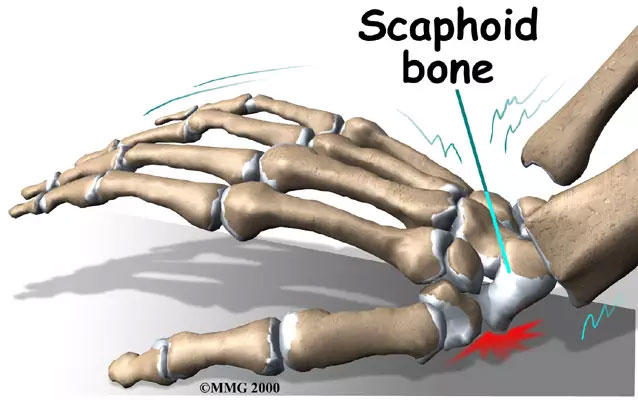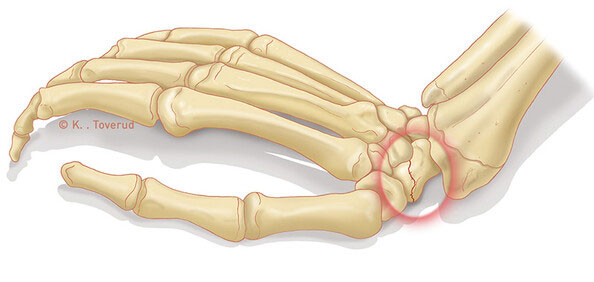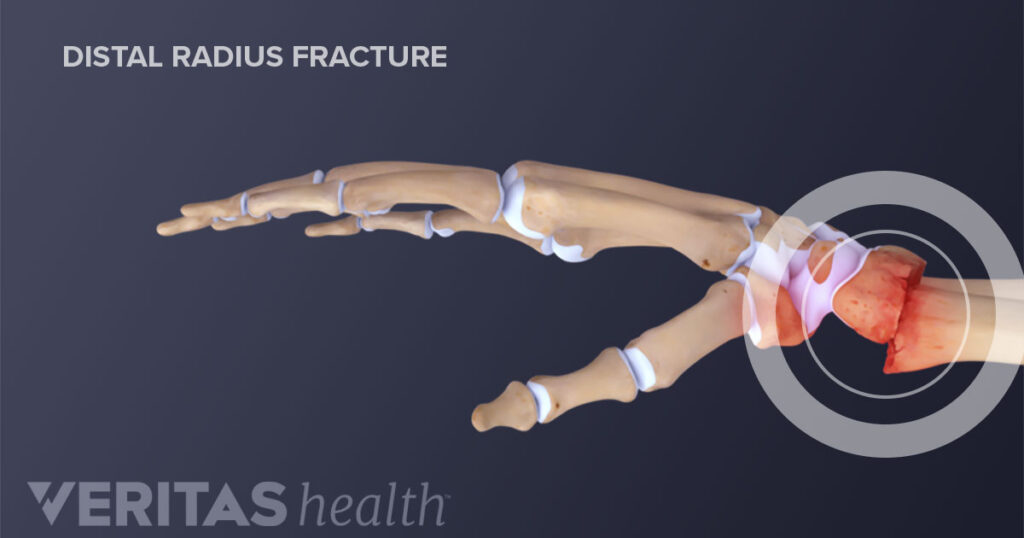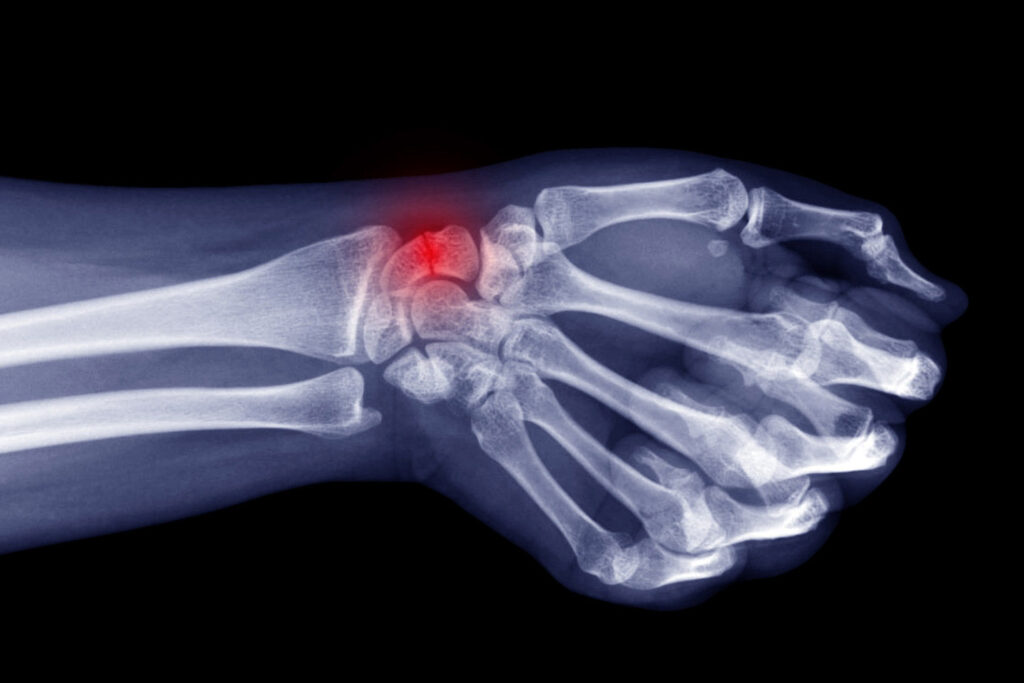FOOSH (Fallen Onto an Outstretched Hand)
If you are a runner, you have probably heard about FOOSH injuries. But what are they? And more importantly, how can you prevent FOOSH injuries? This blog post will answer those questions and give you some tips on how to stay safe while running. Keep reading to learn more!
What is FOOSH?

FOOSH is an acronym that stands for fall on an outstretched hand. These wrist injuries typically occur when a runner trips and falls, landing on their hand with their arm extended. The resulting force can cause serious damage to the bones, ligaments, and tendons in the hand and wrist.
A FOOSH injury can be mild or severe depending upon the following factors:
- The height of the fall
- The surface on which you fell
- The position of your hand and wrist at the time of impact
- Whether you landed on your palm or the back of your hand
If you have suffered a FOOSH injury, it is important to seek medical attention right away. A doctor will be able to assess the severity of your injury and recommend the best course of treatment.
What causes a FOOSH injury?
There are a few different things that can cause a FOOSH injury, but the most common is tripping on something while you are running. This could be anything from a rock or root in the trail to uneven pavement. Another cause of FOOSH injuries is falling during a race. This often happens when runners trip over each other or get pushed from behind.

Common FOOSH injuries
Distal radius fracture
Distal radius fracture (also known as Colles' fracture) is a break of the distal radius, the large bone in the forearm that extends from the elbow to the wrist. This common type of FOOSH injury typically occurs when falling on an outstretched hand. It can also occur from a direct blow to the forearm, such as from a car accident.
Symptoms of distal radioulnar joint injuries include pain, swelling, and bruising in the forearm. The wrist may be deformed or resting in an abnormal position. There may also be numbness or tingling in the fingers due to injury to the nerves in the forearm.
Treatment of a distal radius fracture typically involves immobilization of the forearm in a cast or splint. Surgery may be necessary in some cases. Recovery time is typically four to eight weeks.
Distal radius fractures are one of the most common injuries seen in the emergency room. They are most commonly seen in young adults and adolescents, although they can occur at any age. Elderly patients with osteoporosis are at particular risk for this type of injury.
If you have symptoms of a distal radius fracture, it is important to see a doctor as soon as possible. Treatment is typically most effective when started within the first few days after the injury. Early treatment can help to reduce pain, swelling, and the risk of complications.
Scaphoid Fracture
An ulnar styloid fracture is a break in the bone that forms the pinky finger. The ulnar styloid is one of the eight small bones that make up the wrist. It’s located on the outside of the hand, next to the pinky finger.
Ulnar styloid fractures are relatively uncommon, accounting for only about 2% of all wrist fractures. They typically occur when you fall on an outstretched hand. Ulnar styloid fractures can range from a small crack to a complete break.
If the bone doesn’t heal properly, an ulnar styloid fracture can lead to chronic ulnar sided wrist pain or arthritis. In some cases, the fracture may require surgery to heal correctly.
Treatment of an ulnar styloid fracture typically involves immobilization of the wrist in a cast or splint. Surgery may be necessary in some cases. Recovery time is typically four to eight weeks.
Scapholunate tear
A scapholunate tear is an injury to the ligament that connects the bones of the wrist. The scapholunate ligament is located on the thumb side of the hand and runs from the forearm to the base of the thumb. It’s a crucial ligament for motion and stability in the hand and wrist.
Radial head fracture
A radial head fracture is a break in the bone that forms the elbow. The radial head is one of the three bones that make up the elbow joint. It’s located on the thumb side of the arm and articulates with the humerus (upper arm bone) and ulna (forearm bone).
Hook of hamate fracture
Hook of hamate fracture is a common injury in baseball and other sports. It is caused by the impact of the bat on the ball. The force of the impact fractures the hamate bone, which is located at the base of the thumb. The fracture can be very painful and may require surgery to repair.
Cellulitis
Cellulitis is a common skin infection that can be caused by FOOSH. It occurs when the skin is broken and bacteria enter the wound. The infection can cause redness, swelling, and pain. Cellulitis can be serious and may require antibiotics to treat.
Synovitis
Cellulitis is a common skin infection that can be caused by FOOSH. It occurs when the skin is broken and bacteria enter the wound. The infection can cause redness, swelling, and pain. Cellulitis can be serious and may require antibiotics to treat.
Bruise
A bruise, also called a contusion, is a common injury that occurs when blood vessels are damaged or broken. This can happen from a direct blow to the skin or from a fall. Bone and muscle bruises can range from small and barely noticeable to large and painful.
Most bruises will heal on their own within two weeks. However, some may require medical treatment. Severe bruises can lead to complications such as blood clots, nerve damage, or infection.

How are FOOSH injuries diagnosed?
FOOSH injuries are most often diagnosed through a combination of physical examination and imaging tests. Your doctor will ask about your symptoms and how the injury occurred. He or she will also examine your foot and leg for signs of injury.
Imaging tests may include X-rays, computed tomography (CT) scans, or magnetic resonance imaging (MRI) scans. These tests can help your doctor determine the severity of your injury and develop a treatment plan.
Treatment for FOOSH injuries typically focuses on relieving pain and restoring function. Treatment may include immobilization, physical therapy, and surgery. Immobilization helps to rest the injured foot or leg and allows it to heal.
Treatment for FOOSH injuries
There are a few different options for treating FOOSH injuries. The best option for treating FOOSH injuries depends on the severity of your injury.
For mild FOOSH injuries, rest and ice may be enough to help you recover. You may also need to take over-the-counter pain medication to help with any discomfort.
For more severe FOOSH injuries, you may need to see a doctor or physical therapist. They will be able to assess your injury and develop a treatment plan that is best for you. This may include exercises, stretches, and massages. In some cases, you may need to use crutches or a brace to keep weight off of the injured area.
Severe FOOSH injuries may require surgery to repair the damage. After surgery, you will need to go through a rehabilitation program to help you regain strength and range of motion in your foot or ankle.
No matter what treatment option you choose, it is important to give yourself time to recover. Rushing back into activity too soon can lead to further injury and setbacks.
If you have any questions or concerns about your FOOSH injury, be sure to talk to your doctor or physiotherapist. They will be able to help you figure out the best way to treat your specific injury and get you on the road to recovery.

Are there any home remedies for FOOSH injuries?
There are several home remedies that can help alleviate the pain and discomfort associated with a FOOSH injury. Some of these home remedies include:
-Applying ice to the injured area for 20 minutes at a time, several times a day.
-Elevating the injured limb above heart level to reduce swelling.
-Wearing loose, comfortable shoes and avoiding high heels or tight shoes that may aggravate the condition.
-Taking over-the-counter pain medications such as ibuprofen or acetaminophen to help relieve pain.
If home remedies do not provide relief from your symptoms, it is important to see a doctor for further evaluation.
How can you prevent a FOOSH injury?
There are several things you can do to help prevent a FOOSH injury:
- Be aware of your surroundings when you run. If you are running in an area with obstacles, take extra care to watch where you are going.
- Try to run on even surfaces whenever possible. If you must run on uneven terrain, be sure to take it slow and be cautious of your footing.
- Wear proper running shoes that fit well and provide good support. This will help reduce your risk of tripping and falling.
- Improve your balance and coordination by doing exercises that target those areas. This will make it less likely that you will lose your footing and fall if you do a trip.
FOOSH injuries can be serious, but they are also preventable. By following these tips, you can help keep yourself safe while running and avoid a potentially painful and debilitating injury.
Frequently Asked Questions
A FOOSH is a medical term used to describe an injury to the foot or ankle that occurs when the foot is suddenly forced into an unnatural position. This can happen as a result of a fall, motor vehicle accident, or other trauma.
In a FOOSH injury, the bones in the foot or ankle may be broken, dislocated, or sprained. The ligaments that connect the bones may also be torn. This type of injury can be very painful and often requires surgery to repair.
The first step in healing from a FOOSH injury is to see a doctor as soon as possible. If the bones are broken, they will need to be set and placed in a cast or splint. If the ligaments are torn, they may need to be surgically repaired. In some cases, physical therapy may be necessary to help regain strength and range of motion in the foot or ankle. With proper treatment, most people are able to heal completely from a FOOSH injury.
A FOOSH fracture is a break in one or more of the bones in the foot or ankle. This type of injury can be very painful and often requires surgery to repair.
Have you been injured at some point in your journey?
Are you not achieving your highest level of function?
We’ve helped hundreds of people at all walks in life
get back to performing their best painfree!
3 Ways to Level Up Your Rehab and Injury Prevention With Us





